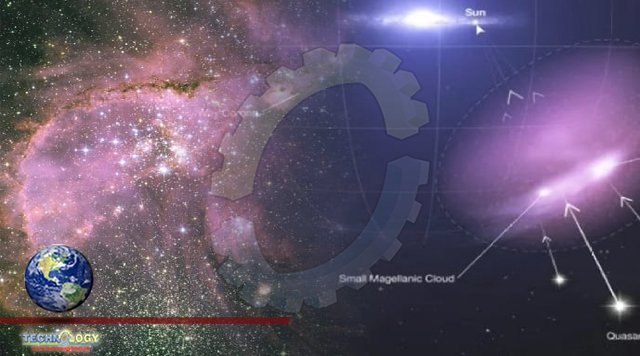Hubble Space Telescope, Researchers confirm the existence of the elusive Magellanic Corona, a protective halo of hot, ionized gas previously known only in theory.

For billions of years, the Milky Way’s most massive cosmic companions – the Large and Small Magellanic Clouds – have been on a tumultuous journey through space, orbiting one another while being torn by the gravitational pull of our own galaxy. Recent theoretical predictions indicate that these dwarf satellite galaxies must be protected by a pervasive shield that prevents the Milky Way from removing their essential star-forming gas. This so-called Magellanic Corona, made of supercharged gas with temperatures of half a million degrees, would act as a sort of cosmic crash zone around the Magellanic Clouds, keeping the disk and stars relatively unscathed during collisions. Even though simulations show that the Magellanic Corona should exist, observational evidence has remained elusive. Using a combination of the unique ultraviolet vision of the Hubble Space Telescope and the Far Ultraviolet Spectroscopic Explorer, along with the probing power of distant quasars, astronomers have finally been able to detect and begin to map the Magellanic Corona. The discovery of this diffuse halo of hot gas, extending more than 100,000 light-years from the Large Magellanic Cloud and covering much of the southern sky, confirms the prediction. It also illuminates our understanding of how small galaxies can interact with larger galaxies without losing the fuel needed for future star formation. For billions of years, the Large and Small Magellanic Clouds – the Milky Way’s largest satellite galaxies – have followed a perilous journey. Orbiting one another as they are pulled in toward our home galaxy, they have begun to unravel, leaving behind trails of gaseous debris. And yet these dwarf galaxies remain intact, with ongoing vigorous star formation, leaving astronomers baffled. “A lot of people were struggling to explain how these streams of material could be there,” said Dhanesh Krishnarao, assistant professor at Colorado College. “If this gas was removed from these galaxies, how are they still forming stars?”
A team of astronomers led by Krishnarao has finally found the answer, with the help of data from NASA’s Hubble Space Telescope and a retired satellite called the Far Ultraviolet Spectroscopic Explorer (FUSE), They discovered that the Magellanic system is surrounded by a corona, a protective shield of hot supercharged gas. This cocoons the two galaxies, preventing their gas supplies from being siphoned off by the Milky Way, and therefore allowing them to continue forming new stars. This discovery, which was just published on September 28 in the journal Nature, addresses a novel aspect of galaxy evolution. “Galaxies envelope themselves in gaseous cocoons, which act as defensive shields against other galaxies,” said co-investigator Andrew Fox of the Space Telescope Science Institute in Baltimore, Maryland. Several years ago, astronomers predicted the corona’s existence. “We discovered that if we included a corona in the simulations of the Magellanic Clouds falling onto the Milky Way, we could explain the mass of extracted gas for the first time,” explained Elena D’Onghia, a co-investigator at the University of Wisconsin–Madison. “We knew that the Large Magellanic Cloud should be massive enough to have a corona.” However, while covering a huge portion of the southern sky and extending more than 100,000 light-years from the Magellanic clouds, the corona is effectively invisible. In fact, mapping it required scouring through 30 years of archived data for suitable measurements. Scientists think that a galaxy’s corona is a remnant of the primordial cloud of gas that collapsed to form the galaxy billions of years ago. Although coronas have been seen around more distant dwarf galaxies, astronomers had never before been able to probe one in as great of detail as this. “There’re lots of predictions from computer simulations about what they should look like, Hubble Space Telescope,how they should interact over billions of years, but observationally we can’t really test most of them because dwarf galaxies are typically just too hard to detect,” said Krishnarao. Because they are right on our doorstep, the Magellanic Clouds provide a fantastic opportunity to study how dwarf galaxies interact and evolve. In search of direct evidence of the Magellanic Corona, the research team sifted through the Hubble and FUSE archives for ultraviolet observations of quasars located billions of light-years behind it. Quasars are the extremely bright cores of galaxies containing massive active black holes. Although the scientists reasoned that although the corona would be too dim to see on its own, they thought that it should be visible as a sort of fog obscuring and absorbing distinct patterns of bright light from quasars in the background. Hubble observations of quasars were used in the past to map the corona surrounding the Andromeda galaxy.
Source: This news is originally published by scitechdaily